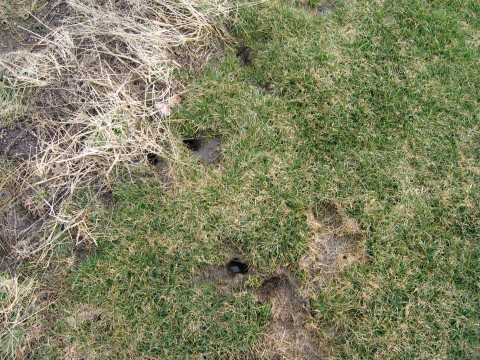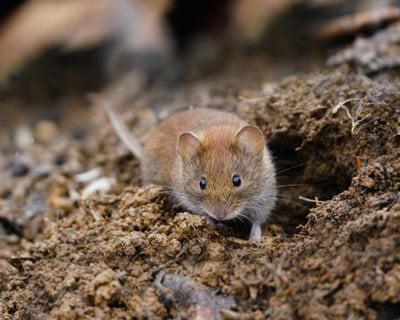Comprehensive Guide to Effective Vole Parasite Control: Infestation Identification and Therapy Methods
In the world of reliable bug control, vole invasions posture an unique difficulty that demands a strategic technique. These little rats, often mistaken for mice, can wreak havoc on gardens, lawns, and crops if left untreated. Identifying the indicators of vole presence and applying targeted therapy techniques are vital elements of an effective pest monitoring plan. By checking out the nuances of vole actions, understanding key indications of infestation, and examining a variety of control options, one can establish a detailed strategy to combat these elusive bugs.
Comprehending Vole Behavior
Vole behavior is characterized by their burrowing behaviors and fast reproduction prices, making them a tough bug to control effectively. Their quick reproductive price more complicates control initiatives, with ladies capable of generating several clutters in a single year, each containing several spawn.
Voles are most active throughout the early morning and night hours, spending the bulk of their time foraging for food. Their burrowing behaviors not only disturb yards and lawns however also make them testing to identify and eliminate. Understanding vole actions is critical for effective bug control techniques. By identifying their burrow places, monitoring feeding areas, and carrying out targeted control techniques, such as capturing or environment modification, vole invasions can be handled efficiently.
Indicators of Vole Invasion

Prevention Strategies
Carrying out reliable prevention strategies is critical in minimizing vole infestations and guarding greenery from their harmful feeding behaviors (vole control). To avoid vole problems, it is important to start by getting rid of prospective food resources and shelter. Keep turf and vegetation trimmed short, remove weeds and particles, and preserve a neat yard or yard to make the location less eye-catching to voles. Installing barriers such as equipment towel or underground secure fencing can likewise assist discourage voles from getting in particular areas. Furthermore, minimizing excess wetness by taking care of leaky pipes and making sure appropriate drain can make the environment less welcoming for voles.
Regularly examining the residential or commercial property for indicators of vole activity, such as paths and delve openings, is crucial for early detection and timely activity. If vole task is believed, consider utilizing catches or repellents strategically positioned near their paths.
Non-Lethal Control Approaches
To properly manage vole populations while prioritizing gentle approaches, non-lethal control methods use useful options for decreasing vole damages in landscapes and gardens. These obstacles can be buried at least 12 inches deep and bent at a 90-degree angle to stop voles from burrowing underneath.

Lethal Control Options
One effective approach for addressing vole infestations in yards and landscapes involves the critical use of deadly control alternatives. When encountered with a severe vole invasion that non-lethal approaches have stopped working to include, applying lethal control steps ends up being vital. One typically utilized dangerous control alternative is the use of snap catches. These catches are made to rapidly and humanely kill voles upon activation, making them a popular option for several gardeners and landscapers. To enhance the efficiency of snap catches, it is advised to position them in areas where vole activity is high, such as along runways or near burrow entries. Another lethal control choice is the use of hazardous lures particularly created to target voles. These lures have poisonous substance that is consumed by the voles, resulting in their eventual death. Care should be exercised when utilizing harmful baits to prevent harm to non-target pets or animals. Generally, when utilizing dangerous control choices, it is important to do so properly and in accordance with local regulations to effectively take care of vole problems.
Final Thought
In conclusion, efficient vole insect control calls for a thorough understanding of vole habits, recognition of signs of problem, implementation of prevention strategies, and use of both non-lethal and lethal control methods. By integrating these approaches, people can effectively handle vole populaces and safeguard their residential property from damage. It is vital to deal with vole invasions promptly to stop more issues and lessen the influence on the surrounding environment.
Provided the detailed tunnel systems and quick recreation rates particular of voles, identifying the signs of vole invasion comes to be vital in reliable parasite control. One of the primary indicators of vole presence is the existence of surface area paths or routes in yard or snow, typically regarding 1-2 inches vast, developed as voles take a trip between their burrows and food sources.To effectively manage vole vole control populations while focusing on gentle approaches, non-lethal control strategies offer useful options for lowering vole damage in landscapes and gardens.One reliable method for resolving vole infestations in landscapes and gardens includes the calculated usage of dangerous control alternatives. vole pest control.In final thought, efficient vole bug control calls for a thorough understanding of vole habits, recognition of signs of infestation, implementation of avoidance approaches, and application of both non-lethal and lethal control methods